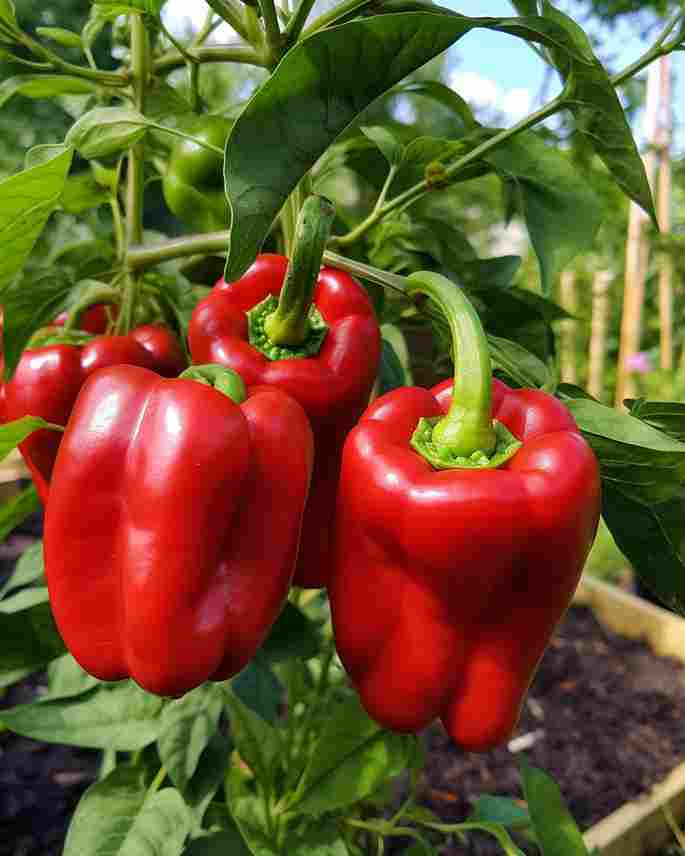Bell peppers (Capsicum annuum) are a popular and nutritious addition to any home garden. These vibrant and versatile vegetables require proper care, including adequate fertilization, to ensure healthy growth and bountiful harvests.
Fertilizing bell peppers properly is essential in providing them with the essential nutrients they need to thrive and produce quality fruits. In this article, we will explore the best practices for fertilizing bell peppers in the garden to help you achieve optimal results.
Understanding the Nutritional Needs of Bell Peppers
Before delving into the fertilization process, it is crucial to understand the nutritional requirements of bell peppers. These vegetables demand a well-balanced diet of essential nutrients, including nitrogen (N), phosphorus (P), potassium (K), calcium (Ca), and magnesium (Mg), as well as micronutrients like iron, manganese, and zinc. The appropriate nutrient balance will promote strong root development, healthy foliage growth, and abundant fruiting.
Soil Preparation
To lay the foundation for successful bell pepper cultivation, start by preparing the soil. Conduct a soil test to assess its pH level and nutrient content. The optimal pH range for bell peppers is slightly acidic to neutral, around 6.0 to 7.0. If the pH is too low or too high, adjust it accordingly using lime to raise pH or sulfur to lower pH.
Moreover, ensure the soil is well-draining and rich in organic matter. Adding compost or well-rotted manure to the soil before planting will not only improve nutrient availability but also enhance soil structure and water retention.
Choosing the Right Fertilizer
When it comes to fertilizing bell peppers, you can choose between organic and synthetic fertilizers. Both options can be effective, but organic fertilizers have the added benefit of improving soil health and microbial activity. Look for fertilizers labeled as “vegetable” or “tomato and vegetable” blends, which are specifically formulated to meet the needs of peppers.
Fertilizing Schedule
Bell peppers have different nutritional requirements during different growth stages. Here’s a general fertilizing schedule to follow:
Pre-Planting:
Before planting bell pepper seedlings, incorporate a balanced fertilizer into the soil based on the soil test results. This initial application will provide essential nutrients for the young plants.
Early Growth Phase:
Approximately 3-4 weeks after transplanting, begin feeding with a nitrogen-rich fertilizer. Nitrogen encourages vigorous vegetative growth and helps establish a strong root system.
Flowering and Fruit Development:
Once the first flowers appear, switch to a balanced fertilizer or one with a higher potassium content (the third number on the fertilizer label). Potassium promotes flower and fruit development and enhances the flavor of the peppers.
Mid-Season Boost:
Around mid-season, apply another round of fertilizer to sustain the plant’s growth and support the maturing fruits.
Fertilizer Application
It’s essential to apply fertilizers correctly to avoid over-fertilization, which can lead to nutrient imbalances and harm the plants. Follow these guidelines:
a. Read and follow the manufacturer’s instructions for the chosen fertilizer carefully.
b. For granular fertilizers, apply them evenly around the base of the plants, making sure to keep the granules at least a few inches away from the stem to prevent burning.
c. Water the plants after applying fertilizers to help the nutrients penetrate the soil and reach the root zone.
d. During the growing season, monitor the plants for signs of nutrient deficiencies (yellowing leaves, poor fruit set) or excesses (burned leaf edges). Adjust the fertilization schedule accordingly.
Additional Fertilization Tips
a. Avoid fertilizing bell pepper plants during hot, dry periods, as this can stress the plants and lead to nutrient leaching.
b. Consider using organic fertilizers, such as compost, fish emulsion, or seaweed extracts, as they gradually release nutrients and improve soil health.
c. Regularly mulch around the plants to conserve moisture, suppress weeds, and enhance the soil’s nutrient retention capacity.


